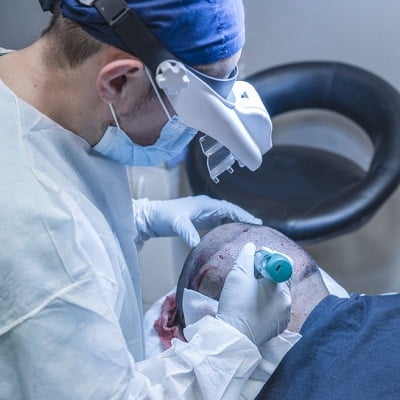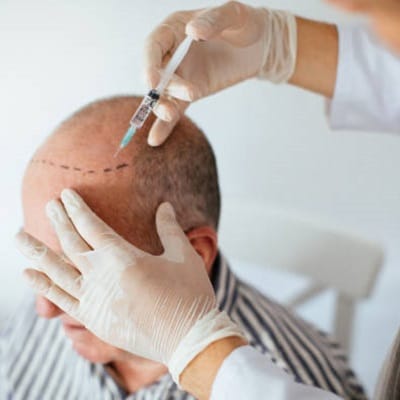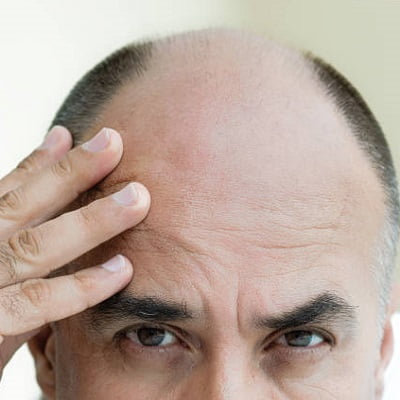
Hair transplants and baldness removal can boost your confidence and appearance. A hairy scalp enhances your attractiveness. Unfortunately, receding hairlines worsen your discomfort and appearance. Natural hair transplantation is the best way to fix this and improve your appearance. So, you may ask if a hair transplant in Islamabad can cure genetic baldness. Read on for the answer.
What is a hair transplant?
Hair transplants can restore thickness, fullness, and natural growth. The patient receives hair transplants after surgery to remove the donor’s hair. Follicles encourage new hair development in bald areas during a natural hair transplant.
Genetic hair loss frequently follows a pattern. Male hair loss begins with a receding hairline and crown thinning, forming a “M” shape. Women with androgenetic alopecia often have extensive crown thinning rather than discrete patterns.
Ideal candidate:
To identify the ideal candidate, consider the following characteristics.
- A person with baldness, receding hairlines, and hair loss
- Knowledge of the procedure’s intricacies, fair expectations, and sufficient donor-site hair
- Your surgeon visit shows your health and fitness.
- People who want to regrow their hair
Islamabad Hair Transplant Types:
FUT:
The FUT removes a tiny strip of scalp from the donor area, where baldness is less common. Then, using a microscope, the surgeon breaks the strip into follicular units and transplants them into the recipient area with substantial hair loss or balding.
FUE:
Another minimally invasive hair transplant method is Follicular Unit Extraction (FUE). Follicular units are removed from the donor area using a tiny punch device. Because of this, the procedure will always implant hair follicular units in a pattern similar to natural hair growth.
Cause of baldness:
Although age is the main cause of baldness, receding hairlines can also cause it. Young individuals experience this, and other factors may create this issue.
The inherited tendency:
Personality is heavily influenced by genetics. This component can also cause inherited issues. Hair loss can also be hereditary. About 80% of people inherit this condition.
Hormonal imbalance:
Hormonal imbalance:
constricts follicles Hair loss can also result from pregnancy and postpartum hormone changes.
Depressive symptoms with stress:
Living in the modern world has pros and cons. Thus, living standards rise. It causes anxiety and depression simultaneously.
A Bad Diet:
The body needs a healthy diet to function effectively. Without precautionary steps, a vitamin-deficient diet might cause hair loss or baldness.
Hair surgery preparation:
Follow your plastic surgeon’s instructions before hair surgery. Take these precautions to avoid surgical issues. The usual commands are
- Sometimes, your medical history is needed.
- Do not take aspirin or other blood thinners.
- Scalp allergy treatment must be sought immediately.
- Shave your scalp only with your surgeon’s approval!
- Quitting smoking and drinking would help.
- Eat well and drink water.
Procedure:
Anesthesia is used for this surgery. The patient receives anesthesia to numb the head. FUE Hair Transplants harvest individual follicular units from a natural clump of one to four hairs. Under a microscope, the medical staff dissects each unit and makes grafts. Hair transplant professionals make tiny incisions to introduce transplants.
Recovery time:
The initial recovery can take 7-10 days. Rest and avoid strenuous activities at this time. You can resume normal activities after 12–14 days. A slight hairline will appear soon after surgery. Take a painkiller to ease this.
This first shedding is expected. Dormancy lasts four to five weeks before hair grows. Shaded hairs never grow back. Patients often endure swelling and bruising throughout recovery, which will fade.
Result:
- The therapy will cause pain, redness, and swelling.
- These effects are transient and will fade.
- It initially causes hair loss but eventually promotes hair growth.
- It usually takes 7–9 months to see results.
- Anyone in good health and medical condition may contemplate this restoration treatment, regardless of gender.
Additional genetic baldness treatments:
Although there are few concealed baldness treatments, let’s see how effective they are:
Wigs, synthetic hair, and extensions are popular baldness treatments because they mask the symptoms. However, due to their high upkeep, these treatments must be updated regularly. They may also be irritating and unnatural. Thus, they may not be the best choice for a lifetime and should only be used to hide baldness temporarily.
Facial hair loss treatments include minoxidil and finasteride. Most doctors recommend it to reduce hair loss, but the effects may not last. Hair loss may improve after medication removal.
PRP therapy injects platelet concentrate to promote hair growth and decrease hair loss. Platelet-rich plasma (PRP) treatment is popular since it is cheap and non-invasive. However, the technique is recommended for early hair loss and cannot replace considerable hair loss.
Islamabad hair transplant cost:
A hair transplant cost in Islamabad starts from PKR 85,000 to PKR 300,000. Because everyone has different needs, prices vary. Several factors can affect treatment costs.
- The graft count
- Extra treatments
- The aftercare process
- Clinic location
- Surgeon skills and expertise
Book Your Consultations!
Anyone interested in hair loss treatment wants to choose the best clinic for outstanding results. SKN Cosmetics offers innovative hair volume and density treatments to improve looks. Contact us immediately if you want a hair transplant in Islamabad.







Book your Appointment